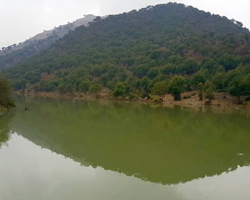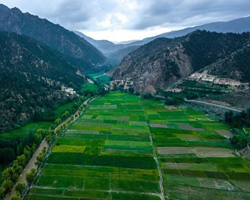Minerals are naturally occurring elements or compounds that have been formed through slow inorganic processes.
Modern civilization is based on the use and exploitation of mineral resources. Minerals can be metallic and non-metallic.
Minerals are not evenly distributed in the Earth. Some countries are rich in mineral deposits whereas others are devoid of it.
Use of mineral resources is an integral part and one of the key premises of development worldwide. With rapid increase in population and a more rapid increase in society’s development needs, the requirements for minerals have grown and diversified manifold.
Extraction of minerals is carried out through mining. Minerals are extracted from beneath the surface, processed, and used for different purposes.
Mineral resources, however, are exhaustible and finite, which means excessive use may affect their availability in the future.
Exploitation of Mineral Resources
Exploitation of mineral refers to the use of mineral resources for economic growth.
Exploitation of mineral resources at a mindless speed to meet the growing needs of modern civilization has resulted in many environmental problems.
Although, the exploitation of minerals began at a slow pace during the industrial revolution in Western countries, during the 20th century, the exploitation of some minerals, especially the fossil fuels increased exponentially to meet the growing energy need. Today, about 80% of the world’s energy consumption is sustained by the extraction of fossil fuels, which consists of oil, coal, and gas.
Consequences of Exploitation of Mineral Resources.
Excessive exploitation of mineral resources has led to the following severe problems.
Deforestation and desertification
Extinction of species
Rapid depletion of high grade minerals
Forced migration
Wastage of upper soil layer and vegetation
Soil erosion and oil depletion
Ozone depletion
Greenhouse gas increase
Environmental pollution
Natural hazards,
Resources obtained from nature, i.e. from the earth are called natural resources. These resources occur naturally, and humans cannot make them. The raw materials used in artificial or man-made resources are natural resources.
Classification of Natural Resources
Classification of natural resources can be done in several ways based on their origin, level of development and uses, stock or deposits, and their distribution.
On the basis of their origin, natural resources can be classified into living or biotic and non-living or abiotic resources.
LIVING OR BIOTIC RESOURCES
If natural resources come from living things or organic materials, they are termed as living or biotic resources. Biotic resources include plants, animals and fossil fuels. Fossil fuels such as coal, oil and natural gas are classified as biotic resources as they are formed from the decay of organic matter over millions of years.
NON-LIVING OR ABIOTIC RESOURCES
On the other hand, if the resources are derived from nonliving or inorganic materials, they are termed as abiotic resources. For instance, air, sunlight, and water are abiotic natural resources. Minerals are also considered abiotic.
On the basis of deposit or stock, natural resources can be classified as renewable and non-renewable.
RENEWABLE NATURAL RESOURCES
Resources that can be used without any risk of its ending up are called renewable resources. They exist in unlimited quantity. Sun, water, wind, biomass, tides, geothermal energy, etc. are renewable resources. These are infinite sources of energy.
NON-RENEWABLE NATURAL RESOURCES
Those natural resources, on the other hand, that cannot be replenished after their depletion is called non-renewable resources. Most fossil fuels, such as coal, petroleum and natural gas are considered nonrenewable resources. Nonrenewable resources take billions of years for their formation, hence, their cautious and economic use is the only option left for mankind.
On the basis of development of resources, natural resources can be classified as actual and potential resources.
ACTUAL RESOURCES
An actual resource is one which is used in current times. We know their approximate quantity, for example: coal deposit.
POTENTIAL RESOURCES
A potential resource is one whose utility is not known at present or is not used despite having the same. Instead, it may be useful at some time in future. In other words, such resources have the potential to have utility, although it does not have any today.










